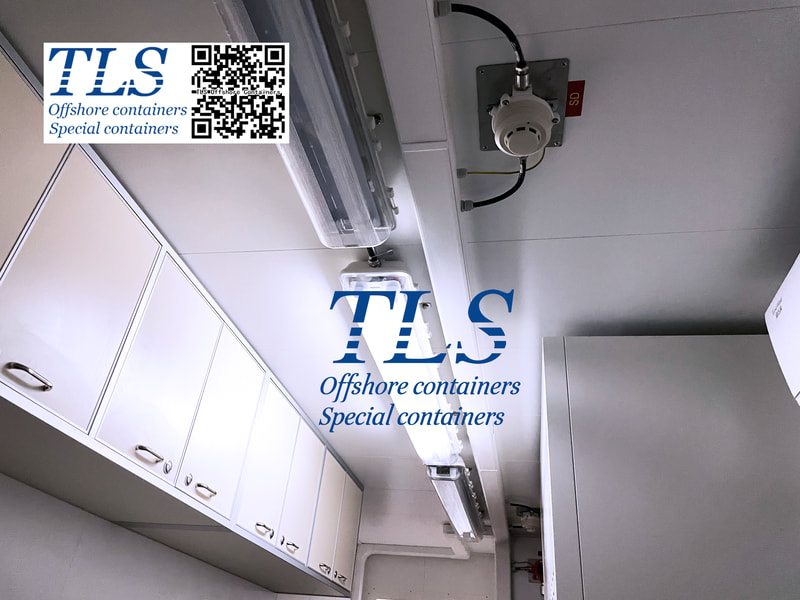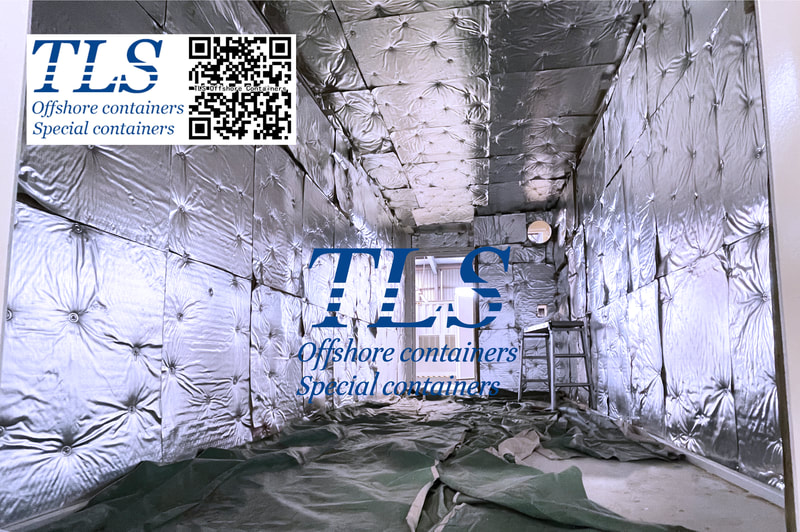|
Specialized shipping containers play an increasingly crucial role in today's industrial and transportation sectors. However, when it comes to specific environments or applications, fire safety becomes a paramount consideration. In this regard, A60 standard containers have emerged as a noteworthy choice. When do specialized shipping containers need to meet the A60 standard? Specialized shipping containers need to meet the A60 standard in the following situations: a) Offshore or Marine Platform Modules: Offshore oil production platforms, offshore wind farm platforms, and similar offshore or marine platform modules require high fire-resistant performance to ensure the safety of personnel and equipment. b) Shipboard Containers: According to the regulations of the International Maritime Organization (IMO), shipboard containers must comply with the A60 fire-resistant standard to provide fire protection and ensure the safety of cargo and personnel on board. c) Laboratory Containers: Laboratory containers used for scientific experiments, research, or analytical work require A60 fire-resistant standard compliance. The floors, walls, and ceilings of laboratory containers must meet the A60 fire-resistant standard to safeguard the laboratory environment. d) Medical Facility Containers: Mobile clinics, emergency stations, and similar medical facility containers need to meet the A60 fire-resistant standard to ensure the safety of medical equipment and patients. Key Conditions for A60 Standard Containers: To meet the A60 standard, containers must fulfill the following critical conditions: a) Fire-Resistant Materials: Use fire-resistant materials in the construction of container structures, such as flame-retardant steel plates, to provide high fire-resistant performance. b) Fire-Resistant Insulation Layer: Add fire-resistant insulation layers, such as fire-resistant mineral wool boards or fire-resistant gypsum boards, to the walls, ceilings, and floors inside the container. These layers enhance the resistance to flame propagation. c) Sealing: Ensure the structural integrity of the container to prevent the ingress or diffusion of flames and smoke through cracks or joints. d) Fire-Resistant Doors and Windows: Install fire-resistant doors and windows at the openings of the container, utilizing fire-resistant glass and door leaves that can withstand fire erosion, thereby preventing the spread of fire. e) Fire Safety Facilities: Equip the container's interior with appropriate fire safety facilities, including fire alarm systems, fire extinguishers, sprinkler systems, etc., to enable timely fire control and suppression. Specialized shipping containers need to meet the A60 fire-resistant standard in specific environments and applications. By employing fire-resistant materials, fire-resistant insulation layers, ensuring sealing, incorporating fire-resistant doors and windows, and installing fire safety facilities, A60 standard containers can provide high fire protection performance, ensuring the safety of personnel and equipment. When designing and selecting specialized shipping containers, adherence to applicable regulations and standards is crucial to meet fire safety requirements, protect the environment, and ensure safety throughout the transportation process. Comments are closed.
|
Archives
July 2024
Categories
All
|
- Home
-
Containerised solutions
- Intelligent pressurised container | MUD logging cabin
- Battery energy storage system (BESS) container
- Flexible grid tied battery storage system
- Laboratory container | workshop container | Equipment containers
- Temporary refuge shelter | Toxic gas refuge | Safe haven
- Offshore accommodation cabin | office container
- Reefer container | Refrigerated container
- Intelligent waste water treatment container
- Fresh water generator container
- Cargo Containers
- Product photos & videos
- News & Blogs
- Contact us
|
Featured products
Intelligent pressurised container Temporary refuge (TR) shelter, toxic gas refuge (TGR) Battery energy storage system (BESS) container Containerised waste water treatment plant Fresh water generator container Reefer container Laboratory container, Workshop container Accommodation container Offshore closed container |
All Rights Reserved 2020 © TLS Offshore Containers / TLS Energy
|


